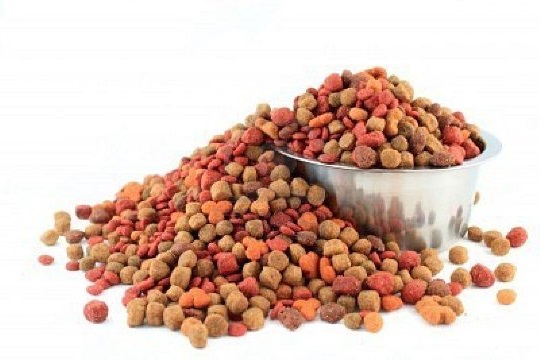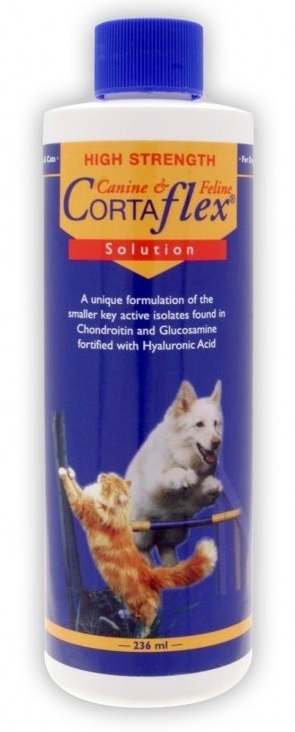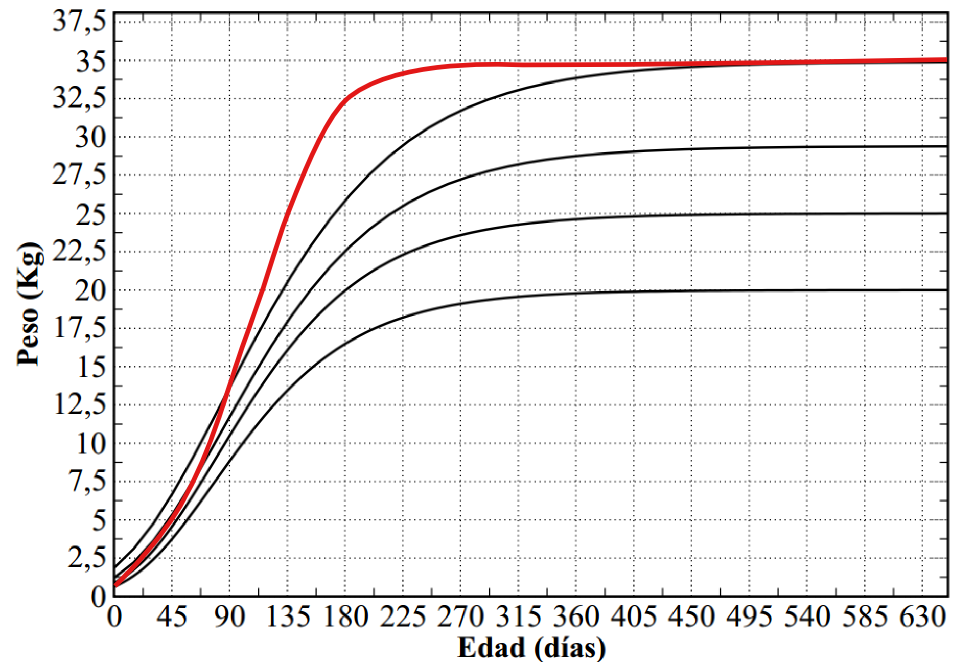A correct diet during a dog’s first few months is vital for preventing bone diseases as an adult dog. While many diseases have a genetic cause, it has been shown that diet can affect when their onset.
An optimal diet is of vital importance in large and giant breeds, since the dog’s future joint health may depend on it. It’s recommended that for these types of breeds, the quantity of food is provided in a controlled manner, even during the first months.
Why is it important to ration the diet of large breed puppies?
The bones of large breed dogs are proportionally “emptier” than those of small breeds. In this way, premature excess weight causes them more “mechanical stress”, predisposing them to bone problems. An excessive diet as a puppy will make them reach the same adult weight at a much faster speed, injuring the bones and joints in the process. Therefore the objective is to achieve a slow and maintained growth, without abrupt increases in weight.
In the following chart you can observe the normal growth of large breed dogs (in black). The red represents excessive growth during the first few months, which will undoubtedly lead to joint problems in the future. As you can see, overfeeding doesn’t cause differences in the final weight of the dog, which is determined genetically, however it does affect when the dog will reach its maximum weight.
Portion control
In large and giant breeds, the daily food allowance should be controlled. Each commercial brand of dog food has its own recommendations (never use the recommendation that appears on one dog food for another, since each is formulated differently and the daily grams for one can vary enormously in comparison to another), which usually depend on the animal’s weight and age. These recommendations refer to the daily quantity, which we can spread out among the number meals we’d like. The younger the animal, the more meals we should provide throughout the day, but always keeping with the manufacturer’s recommended daily allowance.
Type of food
You can find optimal growth graphs for dogs. It’s recommended you get one (ask your vet) and that you record your animal’s weight every two weeks. If at any time you witness that it’s not following the desired growth rate, increasing or decreasing the daily dose of food should be considered. As always, this is of vital importance for large and giant breeds. Furthermore, regular visits to the vet (for example, taking advantage of vaccine visits) are important so that they can evaluate the animal’s body condition (fatness).

Calcium
For many years puppies were recommended to take calcium supplements. Today, dog food comes perfectly formulated with the right amount of calcium depending on the adult size of the animal. It has been shown that excessive calcium intake prevents necessary bone remodeling during growth, predisposing the animal to bone and joint diseases. With regards to calcium, a balanced intake of vitamin D and phosphorous is also essential for proper bone growth.
Calories
It has been seen that one of the most important factors to keep in mind for portion control is the amount of calories ingested daily. An excessive intake is counterproductive during the first stages and especially in large and giant breeds. In these cases, we must be careful of the formulations with an excessive fat content, which contribute to a much higher caloric intake. For example, proportionally, diets for small dogs contain way more calories than for large or giant dogs.
Proteins
Although for a long time it was thought that excessive intake of proteins in puppies produces bone and joint disorders, it has been shown that this is not true. In puppies, protein intake should be higher than in adults. Therefore an important factor is to buy dog food that is adapted to the animal’s age.
 Chondroprotectors
Chondroprotectors
They are considered to be nutritional and, although there is more widespread use in adults and elderly animals, they are also recommended for some puppies when joint disease is suspected as possible in the future, such as: giant breeds, predisposed breeds (Labrador, German Shepard,…), puppies whose parents had known congenital joint disease, puppies who haven’t received an optimal diet… These will help slow down the progression of joint disorders. Their usage is recommended to be chronic. Joint protectors have no side effects and can be used during any stage of the animal’s life.


